Si l’on a l’habitude depuis le sommet du Puy-de-Dôme, avec bonheur, de s’émerveiller de l’alignement de la Chaîne des Puys et de la vue à 360° offerte au visiteur, et, avec habitude, de l’antenne qui surplombe le sommet, modelant son relief si caractéristique, on soupçonne moins l’histoire et l’importance du site. Pour ce faire, il faut remonter plusieurs siècles en arrière et se replonger dans l’histoire des Arvernes. Au IIe siècle, le plus grand temple de montagne de la Gaule romaine se trouve au sommet du Puy-de-Dôme ! Principalement dédié à Mercure, ce grand sanctuaire à terrasses est un haut-lieu de pèlerinage. On y accède depuis l’agglomération du col de Ceyssat, située au plus haut point de la voie Agrippa. À voir le détail sur le site du Conseil départemental du Puy-de-Dôme.
Un temple à la hauteur du puissant peuple Arverne.
Il ne s’agit pas ici de chauvinisme, même si les Auvergnats sont fiers de leur région, mais de faits historiques. On les connaît à travers l’histoire de France et l’épopée de Vercingétorix, avec en particulier la victoire de Gergovie sur les légions romaines et César. Mais les Arvernes ont surtout été l’un des peuples les plus puissants des Gaules. Ce temple, visible de très loin, était un lieu de culte, mais aussi, certainement une démonstration ostensible de leur toute-puissance.
Un espace muséographique accessible gratuitement.
Découvert au 19e siècle, les fouilles archéologiques ont permis de mettre à jour les fondations du temple. L’Espace Temple de Mercure, accessible gratuitement à tous en haute saison, il est fermé depuis fin octobre pour la saison hivernale, permet de découvrir l’histoire des fouilles et du sanctuaire dédié à Mercure. Pourtant, une fois en haut, on se demande ce que sont tous ces bâtiments et puis on les oublie vite, comme obnubilé par les vues et les paysages splendides qui se découvrent. On déambule alors aux quatre points cardinaux du sommet, selon ses envies, le regard au loin. Pourtant l’histoire du temple, partie intégrante du site le plus visité d’Auvergne ne se limite pas aux vues époustouflantes qu’il offre. Se replonger dans l’histoire de nos ancêtres est passionnant même s’il faut faire preuve d’imagination pour imaginer ce à quoi ce sanctuaire, ressemblait. Il faut imaginer les nombreux pèlerins et leur ébahissement une fois au sommet. De quoi impressionner fortement même les plus téméraires.
Pas de reconstruction.
L’objectif n’est pas de reconstruire le temple d’une part parce que sa forme originelle est basée sur des interprétations archéologiques et, car ce n’est pas un objectif. Les pierres et murs ainsi reconstitués, le sont uniquement pour donner une idée au visiteur de ce que le temple a pu représenter à son époque. À terme, une fois les fouilles terminées, on pourra déambuler sur les vestiges protégés et répertoriés. Des aménagements sont en cours en ce sens. Après tout, il n’y a rien de mieux que de pouvoir laisser vagabonder son imagination et tenter de se mettre à la place du pèlerin gaulois découvrant ce site, un peu comme chacun d’entre nous lorsque l’on arrive au sommet, avec le panoramique ou en escaladant le chemin des Muletiers ou celui des Chèvres, les deux seuls itinéraires possibles à pied. On a longtemps imaginé que les grottes découvertes à proximité, Clierzou, Sarcouy, ont été formées suite à l’extraction des roches pour la construction du Temple de Mercure. Les dernières développement tendent à prouver qu’il n’en est rien. Les pierres ayant servi à l’édification du sanctuaire, proviennent du cratère killian, à proximité immédiate du chemin des Muletier, l’itinéraire le plus accessible pour accéder au sommet.
Un petit truc en plus ?
S’imaginer prendre en photo le temple ne sera jamais possible puisque celui-ci restera à l’état de fondation avec quelques murs pour exemple de son aspect originel. Il n’empêche, intégrer ce qu’il en reste dans les prises de vue est plutôt sympa et impactant. Avec le Sancy en arrière plan, surtout lorsque la neige commence à recouvrir les sommets du massif. Bien entendu, il faut être courageux pour prendre le chemin des Muletiers, tôt en fin de nuit, pour être aux premières loges lorsque la soleil va se lever. C’est le moment de bénéficier d’une superbe lumière dorée sur le temple et la Chaine des Puys. Avec un peu de chance, la neige et le givre rendront les photos originales.
D’autres photos du sommet du Puy-de-Dôme sont visibles ici.
If we are used to marvel at the alignment of the Chaîne des Puys and the 360° view offered to the visitor, and, with habit, at the antenna which overhangs the summit, shaping its so characteristic relief, we suspect less the history and the importance of the site. To do this, we must go back several centuries and immerse ourselves in the history of the Arvernes. In the 2nd century, the largest mountain temple in Roman Gaul was located at the top of Puy-de-Dôme! Mainly dedicated to Mercury, this great sanctuary with terraces is a high place of pilgrimage. It can be reached from the village of Ceyssat, located at the highest point of the Agrippa road. To see the detail on the site of the departmental Council of Puy-de-Dôme.
A temple at the height of the powerful Arverne people.
This is not a question of chauvinism, even if the Auvergnats are proud of their region, but of historical facts. We know them through the history of France and the epic of Vercingetorix, with in particular the victory of Gergovie over the Roman legions and Caesar. But the Arvernes were above all one of the most powerful people in Gaul. This temple, visible from far away, was a place of worship, but also, certainly an ostensible demonstration of their omnipotence.
A museographic space accessible free of charge.
Discovered in the 19th century, archaeological excavations have brought to light the foundations of the temple. The Espace Temple de Mercure, accessible free of charge to all in high season, it is closed since the end of October for the winter season, allows to discover the history of the excavations and the sanctuary dedicated to Mercury. However, once up there, one wonders what all these buildings are and then one quickly forgets them, as if obnubilated by the views and the splendid landscapes which are discovered. One wanders then to the four cardinal points of the top, according to its desires, the glance in the distance. However, the history of the temple, an integral part of the most visited site in Auvergne, is not limited to the breathtaking views it offers. To plunge back into the history of our ancestors is fascinating even if one has to use one’s imagination to imagine what this sanctuary looked like. You have to imagine the numerous pilgrims and their amazement once at the top. It is enough to impress even the most reckless.
No reconstruction.
The objective is not to reconstruct the temple, on the one hand because its original form is based on archaeological interpretations and, on the other hand, because it is not an objective. The stones and walls thus reconstructed are only to give the visitor an idea of what the temple may have represented in its time. In the long term, once the excavations are finished, it will be possible to walk on the protected and listed vestiges. Arrangements are underway for this purpose. After all, there is nothing better than being able to let one’s imagination wander and try to put oneself in the place of the Gallic pilgrim discovering this site, a bit like each of us when we reach the summit, with the panoramic view or by climbing the path of the Muleteers or the one of the Goats, the only two possible itineraries by foot. For a long time it was imagined that the caves discovered nearby, Clierzou, Sarcouy, were formed following the extraction of rocks for the construction of the Temple of Mercury. The latest developments tend to prove that this is not the case. The stones used for the construction of the sanctuary come from the Killian crater, in the immediate vicinity of the Muletier path, the most accessible route to the summit.
A little something extra ?
Imagining taking a picture of the temple will never be possible since it will remain in the state of a foundation with a few walls as an example of its original appearance. Nevertheless, integrating what is left of it in the shots is rather nice and impactful. With the Sancy in the background, especially when the snow starts to cover the summits of the massif. Of course, you have to be brave to take the Chemin des Muletiers, early at the end of the night, to be in the front row when the sun will rise. It is the moment to benefit from a superb golden light on the temple and the Chaine des Puys. With a bit of luck, the snow and the frost will make the pictures original.
Other pictures of the Puy-de-Dôme can be seen here.
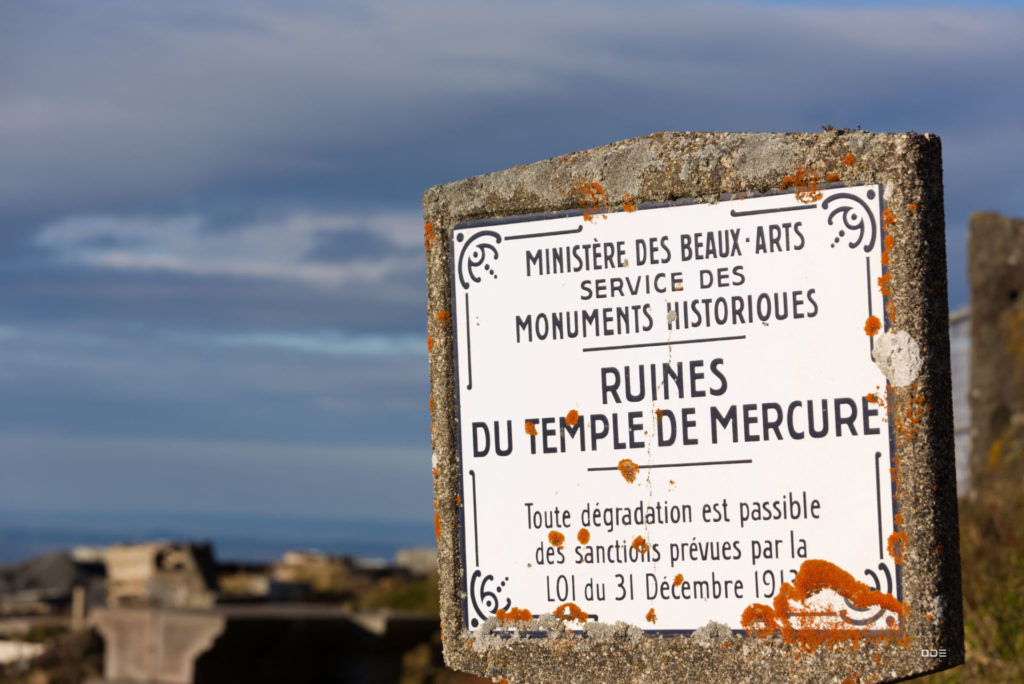
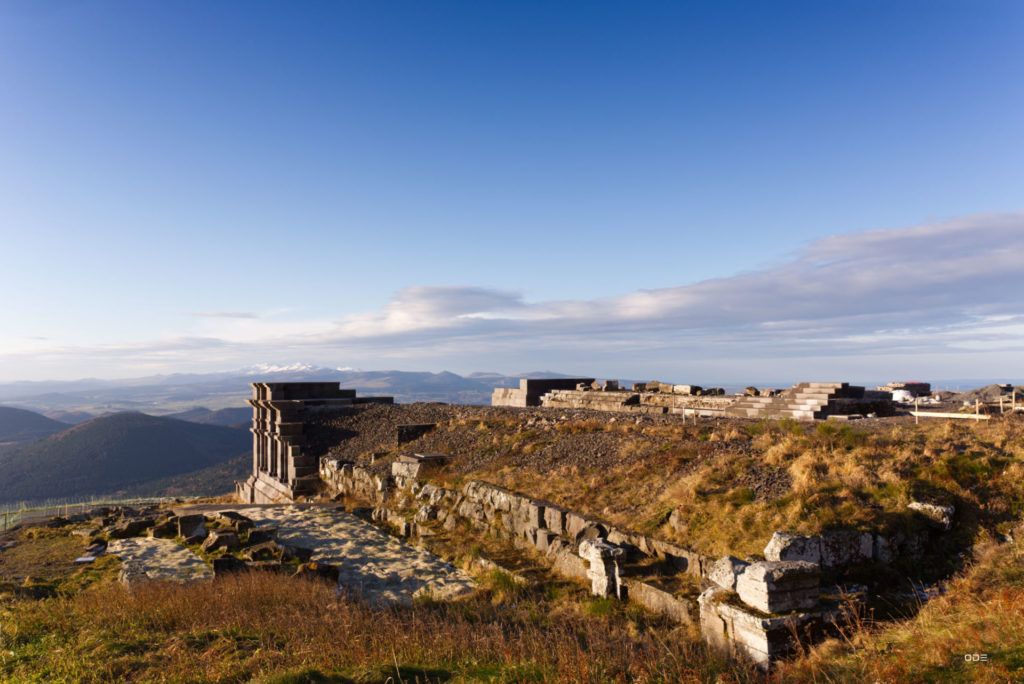
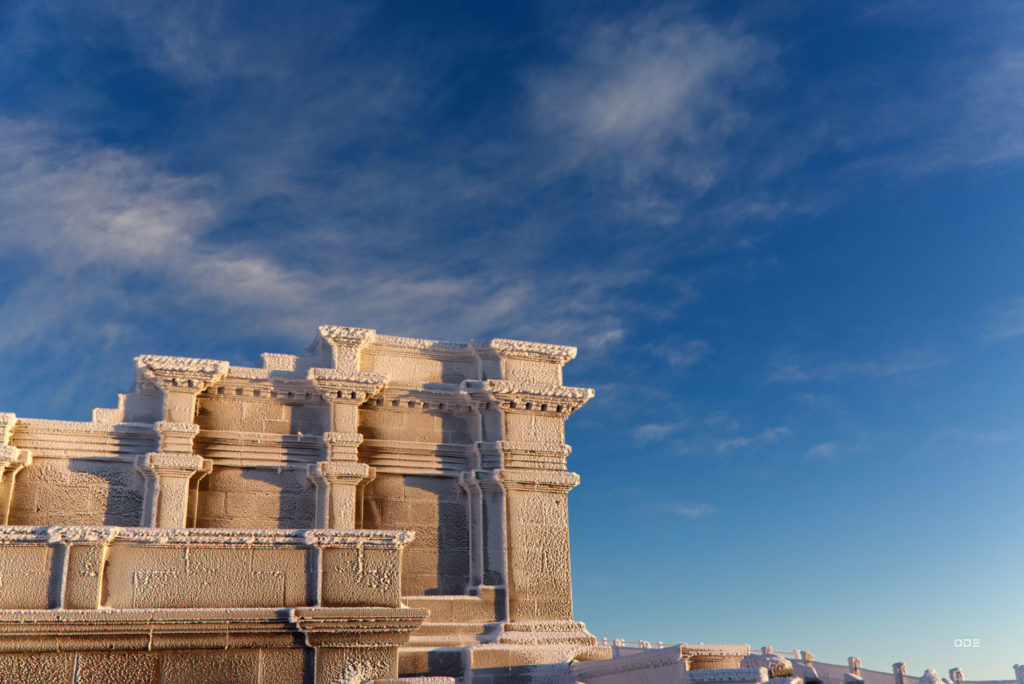


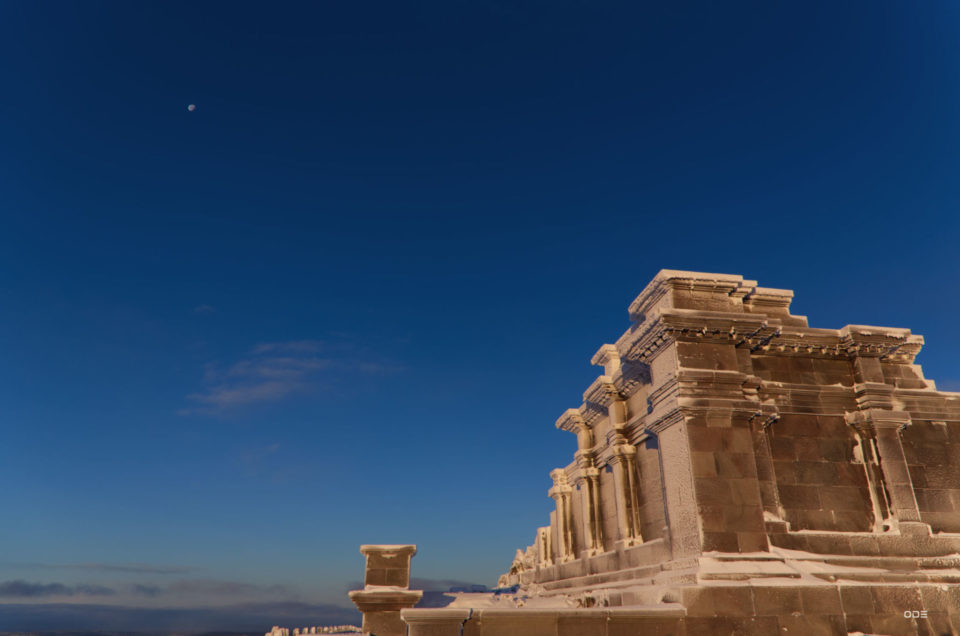
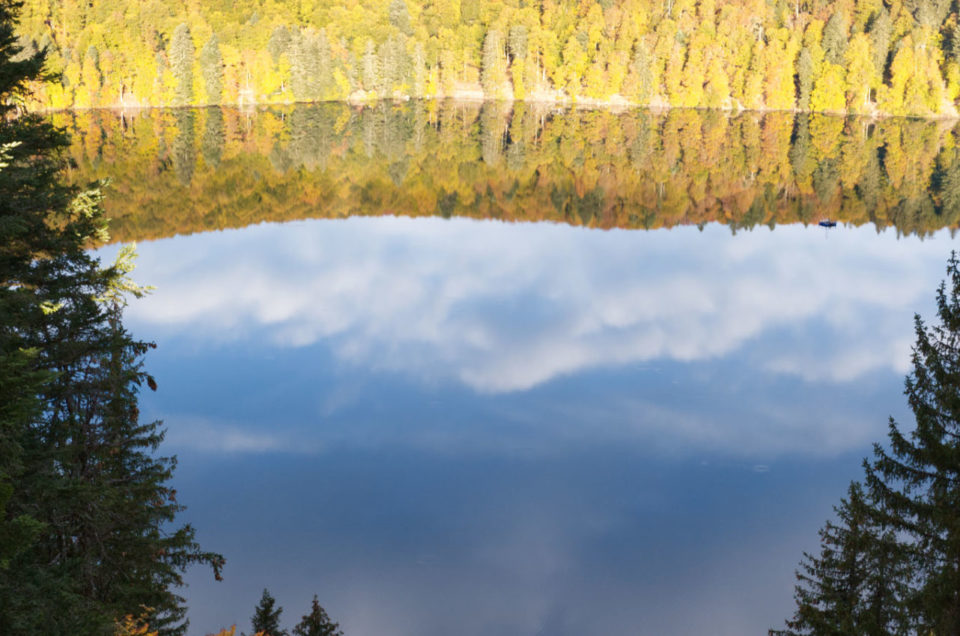

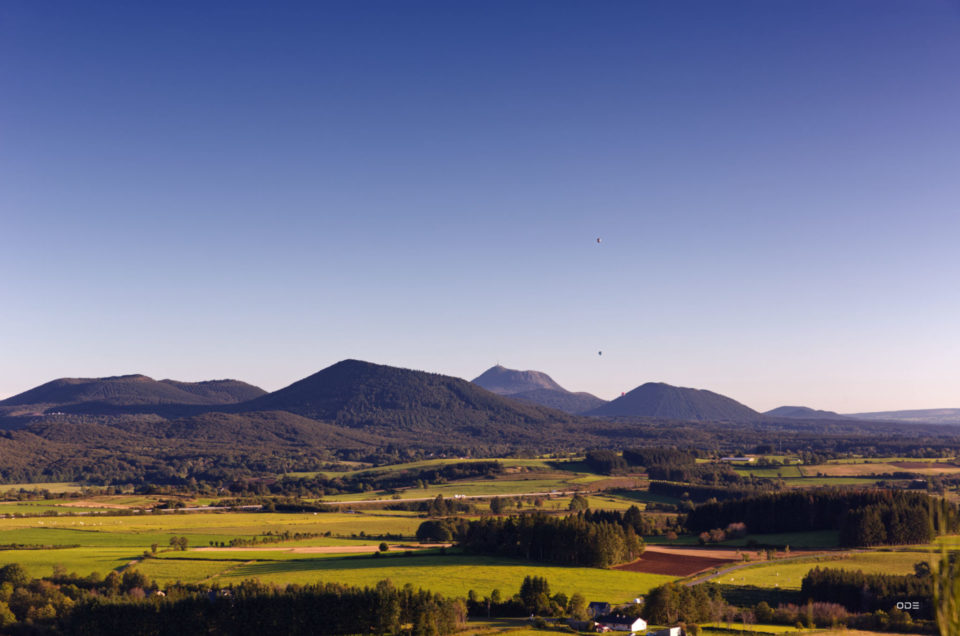


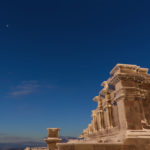
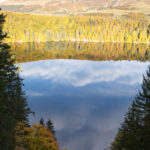
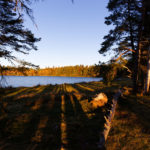
Répondre